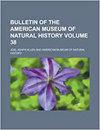Systematic Revision of the Arboreal Neotropical “Thorellii” Clade of Centruroides Marx, 1890, Bark Scorpions (Buthidae C.L. Koch, 1837) with Descriptions of Six New Species
IF 3.4
2区 环境科学与生态学
Q1 BIODIVERSITY CONSERVATION
Bulletin of the American Museum of Natural History
Pub Date : 2021-09-16
DOI:10.1206/0003-0090.452.1.1
引用次数: 2
Abstract
ABSTRACT The arboreal Neotropical “thorellii” clade of Centruroides Marx, 1890, bark scorpions (Buthidae C.L. Koch, 1837) is revised, using a novel approach to species delimitation. A phylogenetic analysis, based on 112 morphological characters and 1078 aligned DNA nucleotides from the mitochondrial Cytochrome c Oxidase Subunit I (COI) gene, provided the framework for placing singletons from geographically disparate localities (and often with suboptimal preservation) using COI minibarcodes, thereby enlarging the taxon sample for diagnosis and delimitation of morphological species. Six new species are described, tripling the known diversity in the clade to nine: Centruroides berstoni, sp. nov.; Centruroides catemacoensis, sp. nov.; Centruroides chanae, sp. nov.; Centruroides cuauhmapan, sp. nov.; Centruroides hamadryas, sp. nov.; Centruroides yucatanensis, sp. nov. Revised diagnoses are presented for Centruroides hoffmanni Armas, 1996, Centruroides rileyi Sissom, 1995, and Centruroides schmidti Sissom, 1995. Comparative images, a key and distribution maps for all species of the clade are provided, along with a summary of available data for their ecology.对新热带植物中心蛛“Thorelii”分支的系统修订Marx,1890,树皮蝎(Buthidae C.L.Koch,1837)及六个新种的描述
摘要利用一种新的物种划界方法,对Marx,1890,树皮蝎子(Buthidae C.L.Koch,1837)的树栖新热带“thorelii”分支进行了修订。基于来自线粒体细胞色素c氧化酶亚基I(COI)基因的112个形态特征和1078个排列的DNA核苷酸的系统发育分析,提供了使用COI小条形码放置来自地理不同位置(通常保存不理想)的单体的框架,从而扩大了用于形态物种的诊断和划界的分类单元样本。描述了六个新物种,使分支中已知的多样性增加了三倍,达到九个:伯氏Centruroides berstoni,sp.nov。;catemacoensis Centruroides,sp.nov。;chanae Centruroides,sp.nov。;夸马潘Centruroides cuauhmapan,sp.nov。;滨鹬Centruroides hamadryas,sp.nov。;yucatanensis Centruroides,sp.nov.对hoffmanni Armas Centruroide斯,1996,rileyi Sissom Centruroidees,1995和schmidti Sissom Centreuroides进行了修订诊断。提供了该分支所有物种的比较图像、关键和分布图,以及其生态学的可用数据摘要。
本文章由计算机程序翻译,如有差异,请以英文原文为准。
求助全文
约1分钟内获得全文
求助全文
来源期刊
CiteScore
7.90
自引率
2.90%
发文量
4
审稿时长
>18 weeks
期刊介绍:
The Bulletin, published continuously since 1881, consists of longer monographic volumes in the field of natural sciences relating to zoology, paleontology, and geology. Current numbers are published at irregular intervals. The Bulletin was originally a place to publish short papers, while longer works appeared in the Memoirs. However, in the 1920s, the Memoirs ceased and the Bulletin series began publishing longer papers. A new series, the Novitates, published short papers describing new forms.

 求助内容:
求助内容: 应助结果提醒方式:
应助结果提醒方式:


